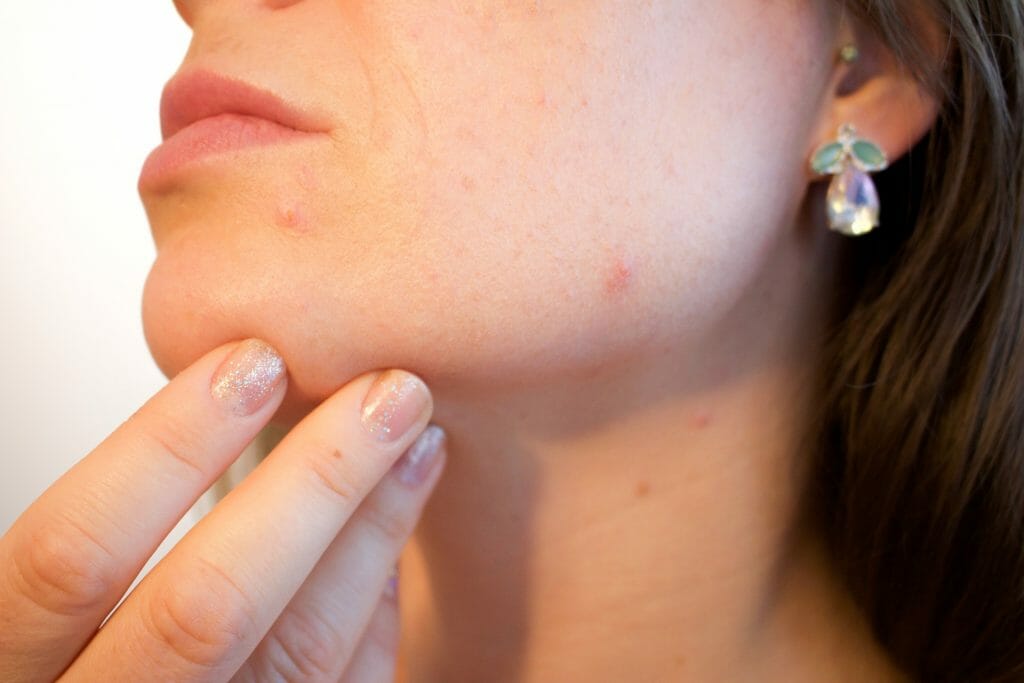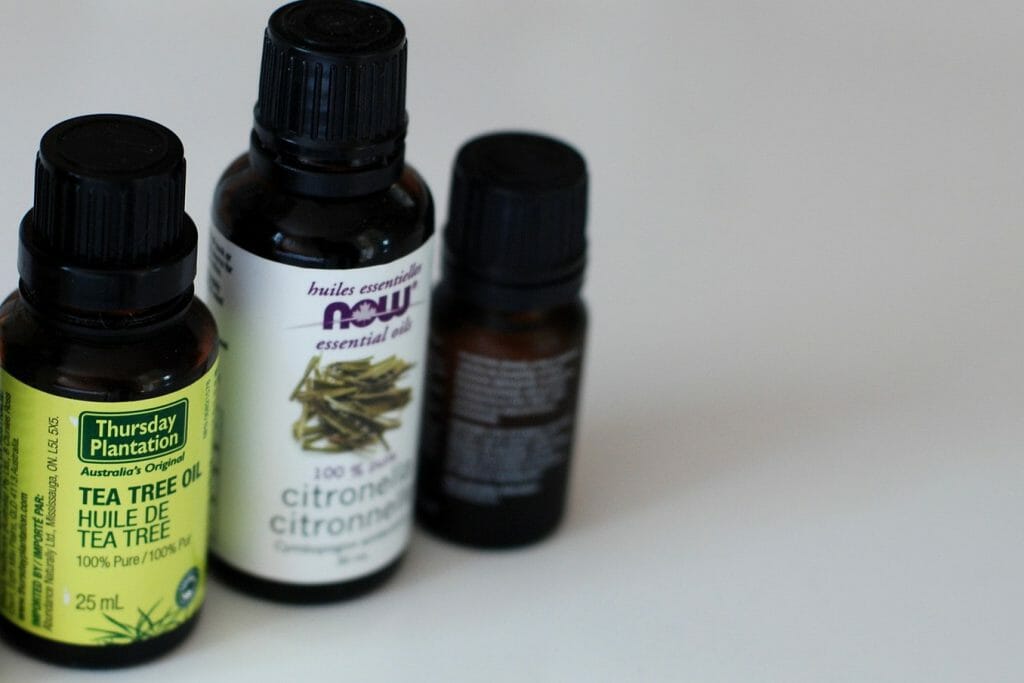Oily skin is a result of the sebaceous glands in the skin getting all over excited and producing too much sebum. Sebum is the oily, waxy substance that hydrates and protects the skin and in small amounts it’s class. Too much sebum however, can lead to oily skin and acne – but it’s still vital for keeping your skin healthy. So it’s more of a matter of balancing out your excess sebum than getting rid of it altogether.
Symptoms of Oily skin include:
- Shiny or greasy appearance
- Spots/recurring spots and acne
- Clogged pores
- Very large or obvious pores
- Skin that looks rough
- Blackheads

But…. why?
Oily skin symptoms vary from person to person, with a number of factors playing a part. These can include your genetics, any medication you might be on, hormonal imbalance, your environment, what products you use, how stressed out you are, your diet and your lifestyle. Obviously, there’s not loads we can do about genetics, but we’ll try and sort out a few of the other things. Let’s begin with a couple of vital points before we get down to the details.
Imperative acne improvement tips:
- Don’t pick your blemishes
- Don’t over-cleanse with harsh chemicals
- Accept that you need to take care of yourself from the inside out
- Stay properly hydrated at all times.
- Give your skin a chance to adapt to this new care routine – everything that’s worth it takes time.

Things to eat for oily skin
- Holy basil tea No, this is not just a very polite way of exclaiming shock. When consumed every day, this tea helps to regulate your hormone levels and supports healthy blood sugar levels. It can also be applied topically as a gentle home cleanser during breakouts.
- Probiotics and fermented foods A healthy gut means healthy skin, as a number of skin problems can be caused by poor digestion. Probiotics strengthen the lining of the gut – which can reduce instances of acne breakouts. They’re also packed with various antioxidants depending on the vegetables used, so get creative!
- Ginger Dried or fresh (though fresh is better) is excellent for gut health. It can reduce inflammation and nausea, generally promoting good gut health which in turn promotes healthy skin.
- Guggul supplement Antibiotics prescribed to fight acne are very damaging to the good bacteria found in your gut. Guggul supplements are a natural alternative that yields better results without damaging your system. As well as this, guggul is better in the long term. Studies have shown that patients are 50% more likely to relapse after taking antibiotics to treat their acne than they are after taking guggul supplements.
- Oily fish Food rich in Omega-3s, like oily fish, is great for acne, as Omega-3 can control the production of leukotriene B4, which is a molecule that can increase the production of sebum, and cause inflammatory acne.
- Foods rich in zinc Zinc is a mineral which regulates hormonal balance, so is particularly good for those who notice their skin becomes more oily when their hormones change. Beef, egg yolks, flax seeds, pumpkin seeds are all good sources. And lobster, for those treat yo’self days.
- Avoid foods that cause blood sugar spikes or inflammation – If you stick to the guide in our main article, you should be fine! It should go without saying but if you have foods that you know trigger your acne, avoid them if you want to keep blemishes at bay.

Products to use… and how to use them
- It’s important to keep you pores clear of collected debris, and the best way to do this is to gently exfoliate. Our kόri facewash uses only natural ingredients and contains biodegradable beads to gently massage your skin, so you can rinse away the day!
- After cleansing, it can be very helpful to use a facial tonic, as a spritz or two can remove any leftover residue, close up your pores to reduce the build up of debris and can restore the skin’s natural pH levels. Our gösta facial tonic contains only natural ingredients, including witch hazel which is a natural astringent, meaning it will help keep your pores shut.
- Our kåre moisturiser contains a number of soothing ingredients including chamomile and aloe vera. Its light texture ensures that it won’t clog up your pores while providing the moisture you need to keep your complexion balanced.
- One of the oldest home remedies for oily skin is tea-tree oil. It can reduce redness and acts as an antiseptic for open lesions. Wash and dry you face. Mix 4-8 drops of Tea tree oil with a teaspoon of coconut oil and apply topically with a cotton bud to affected areas before bed. Rinse in the morning. *always use a carrier oil, like coconut, as tea tree oil is very potent and can cause irritation if applied on its own to the skin*
- You might not expect it, but CBD oil is also an excellent anti-inflammatory agent, when applied topically to troublesome spots. Just dab a drop or two onto the affected area, leave on overnight and rinse in the morning.
Homemade Face Masks
No.1: The Oaty Coconut
(A cosy bit of tropical wonder)
As we all know, coconut oil is crazy good for your skin. Well, so are oats, for a number of different reasons. So stick them together and you’ve got yourself a bangin’ face mask that will calm and nourish your skin.
Ingredients
- 1 Tablespoon of Extra virgin Coconut Oil
- 3 Tablespoons of Oatmeal
- ¼ of a cup of Warm Water
Recipe
- Pour the water into a mixing bowl
- Add the coconut oil and stir until completely melted
- Sprinkle the 3 tablespoons of oatmeal into the mixture
- Stir everything together until it forms paste.
- Let it cool.
Directions
- Wash your face and neck (we recommend our kóri exfoliating face wash for this) and remove any makeup. Coconut oil is an excellent make-up remover – just apply a little to the area, gently massage and then wipe away with a cotton pad or tissue.
- Apply the mixture to your face. Lie back and relax for 15 minutes
- After 15 minutes, begin gently massaging the mask into your face using slow circular motions. Continue this for 5 minutes.
- Rinse off the mask with lukewarm water
- Pat your skin dry with a soft clean towel
- Spritz a little of our gösta facial tonic on afterwards, to close up and tighten your pores.
No.2: Oh Honey Pleeease
(Sass up your complexion)
Ingredients
- 2 tablespoons of raw honey
- One teaspoon of coconut oil
- ½ a teaspoon of cinnamon – when added to honey, cinnamon holds anti-inflammatory, antioxidant and antibacterial properties
- 2 drops of Tea Tree oil to be added during breakouts.
Directions
- Mix all of the ingredients together
- Smooth over your face – take care to avoid the eyes, as cinnamon can be an irritant.
Relax for 5-10 minutes and then gently remove with a clean damp cloth.

Lifestyle
Generally following any good lifestyle/wellbeing advice is likely to help with the care of oily skin. But there are a few more specific things that are worth trying if you have oily skin.
It turns out that beauty sleep is a real thing. The chances of your skin freaking out increases with every hour of sleep you miss, due to the psychological stress that comes with a lack of sleep. 7 hours a day is the minimum you should be getting for a serene mind and a calm complexion.
Exercise is great, both for your mind and your body. Whether it’s a jog along the coast, an aggressive go on a rowing machine, or a 15 minute yoga session, any kind of exercise encourages glorious endorphins to swim happily through your mind, making you feel top notch. As well as improving your mental health, your blood circulation will also improve, which is excellent news for your complexion!
Drink loads of water. Our planet is covered in water for a reason, and that reason is for the things walking around on it to drink it (fresh water that is). Water keeps your body and mind running smoothly, and after a glass of water you’ll always feel a bit better.
Aside from these key factors, here are a couple of other specific tips for those with a bit too much sebum:
- Stay out of the sun and use sunscreen. Too much exposure to that fiery ball of… fire can shockingly cause inflammation which in turn can lead to breakouts. Look for ‘non comedogenic’ sunscreen as this is less likely to clog your pores and try and avoid sunscreens with harsh chemicals in them.
- Change your pillowcase once a week. This will reign-in any midnight pore-clogging that’s going down.
- Clean your phone regularly. Not to gross you out, but your phone is a hotbed of miniature life activity and it’s a good idea to keep it all sparkly so your face isn’t exposed to anything sitting about on that screen!
And most importantly. Be really nice to yourself. Treat yourself like you would treat your friend. So many of us are our harshest critics. Calming the dickens down will do you, and your skin, so many favours in the long run, both mentally and physically speaking.



